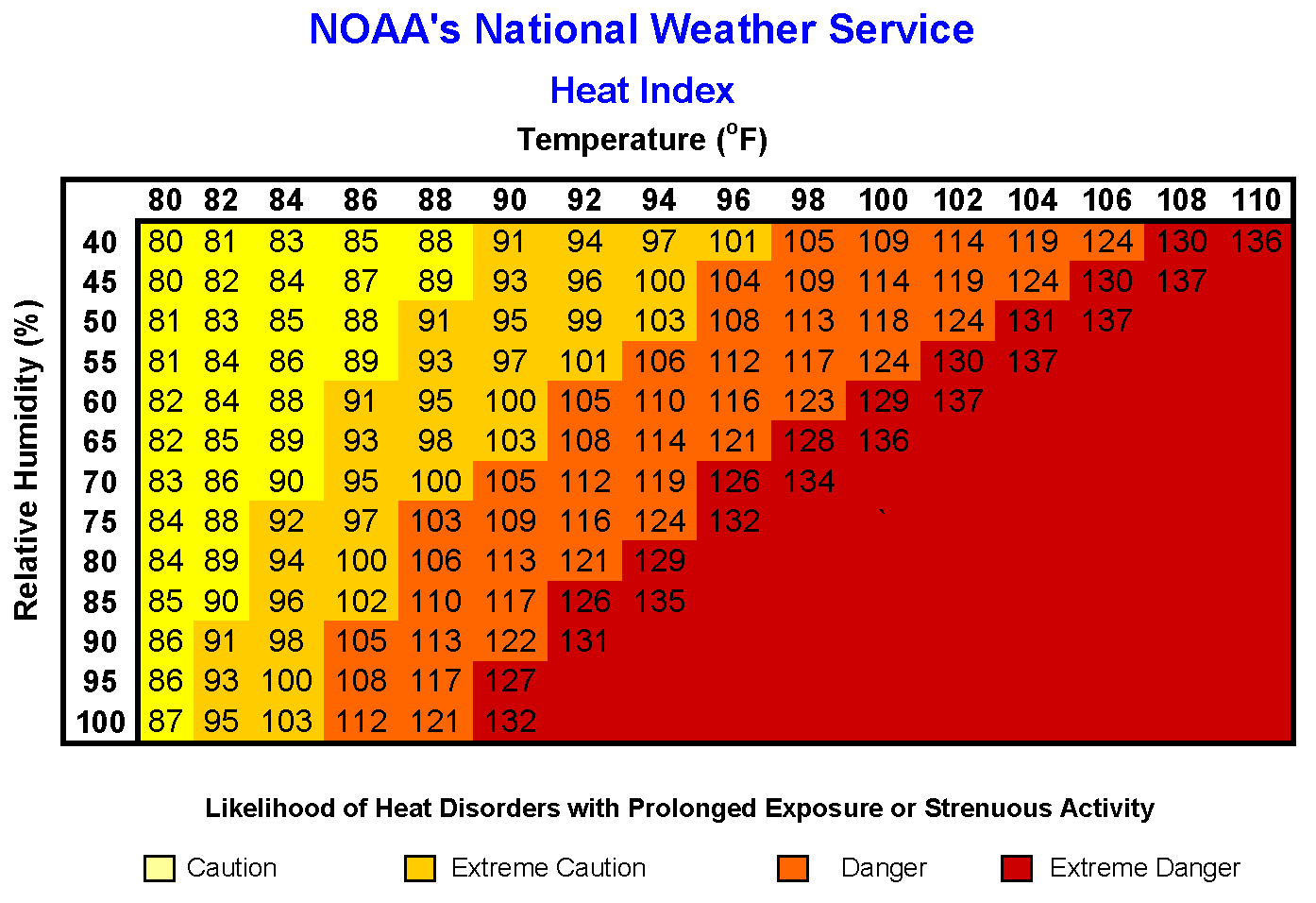RiskVA
Danger – Extreme Heat and Humidity 6 Jul 2016
Much of our area has been sweltering under temperatures in the upper 90s or higher, with high humidity. Heat, combined with humidity, can kill. Older people, especially those who live in homes without air conditioning, people in poor physical condition, or those who are significantly overweight – like your pear-shaped author – are more likely to develop serious, life-threatening, heat-related problems. My physician is probably nodding his head in agreement.
Heat Index and RealFeel Indices
The National Weather Service measures air temperature and humidity to get a Heat Index. AccuWeather calculates a more complicated RealFeel Index, which was created in the 1990s.
AccuWeather says “Some of the components that are used in the RealFeel Index equation are humidity, cloud cover, winds, sun intensity, and angle of the sun. Humidity is a large contributor to determining the RealFeel, but the time of the day is also important, due to the angle of the sun.”
“The heat index based on temperature and humidity gives a good sense about how the body is perceiving the heat, based on its ability to cool itself,” National Weather Service Eli Jacks said.
High humidity and temperatures increase heat’s health hazard. At higher humidity, perspiration doesn’t evaporate quickly enough to cool our bodies efficiently. The effect is that the temperature seems higher than the thermometer shows. The “heat index” is used to indicate this. For example, a temperature of 100 degrees and a relative humidity of 40% produces a heat index of 110 degrees. The same 100-degree temperature with 60% humidity produces a heat index of a blistering 132 degrees! Heat Index ratings of 90-104 degrees make heat cramps or heat exhaustion possible; 105-130 means heat exhaustion is likely, and heatstroke possible; 130 and higher is a warning that heat stroke is very likely.
Heat Exhaustion
In heat exhaustion, the skin feels cold and clammy. Symptoms include sweating, high pulse rate, weakness, dizziness, feelings of anxiety, nausea, and vomiting. The victim should lie down in a cool environment with the feet elevated, and drink a water/salt replacer such as Gatorade or a solution made by mixing 1/2 tsp baking soda and 1/2 tsp table salt in a quart of cool water. Be careful though. Drinking too much or too fast can cause vomiting. Heat exhaustion victims usually have a temperature near or very slightly above normal, but if the body temperature begins to rise sharply, heat stroke may be developing. In any case, consult a physician. After recovery from heat exhaustion be very cautious about resuming physical activity for at least a day.
Heat Stroke
Heat stroke is a medical emergency. Victims can die within minutes if not properly treated. They usually have hot, dry skin and have stopped sweating. In contrast to the slow and usually noticeable signs of heat exhaustion, a heat stroke victim may develop a headache, sudden weakness, and then suddenly lose consciousness. Their oral temperature may quickly exceed 105 degrees, and immediate cooling is vital to prevent brain damage. They are often mentally confused and incoherent. In all heat stroke cases call 911 immediately. Move them gently to a cool area, pour cool (not cold) water over them and fan to increase evaporative cooling. Or drape them with cool, wet cloths or a wet sheet and fan them. Immersion in cool (not cold) water may be helpful. Rapid medical aid is essential. If the victim is unconscious, they must not be given anything by mouth.
Avoid extreme exercise during the heat of the day and drink plenty of water, even though you may not feel thirsty. Wear a hat and loose fitting clothing that allows ventilation around the body, and light-colored fabrics that reflect the radiant heat of the sun. If you don’t feel well, stop, rest, drink water, and cool off. In other words, the key to surviving hot, humid summer weather is prevention. Be cautious, be careful, be wise, and you can actually enjoy this time of the year, even in the fields and forests. What can I say? It’s Texas. What did you expect?
Dr. Risk is a professor emeritus in the College of Forestry and Agriculture at Stephen F. Austin State University in Nacogdoches, Texas. Content © Paul H. Risk, Ph.D. All rights reserved, except where otherwise noted. Click paulrisk2@gmail.com to send questions, comments, or request permission for use.

